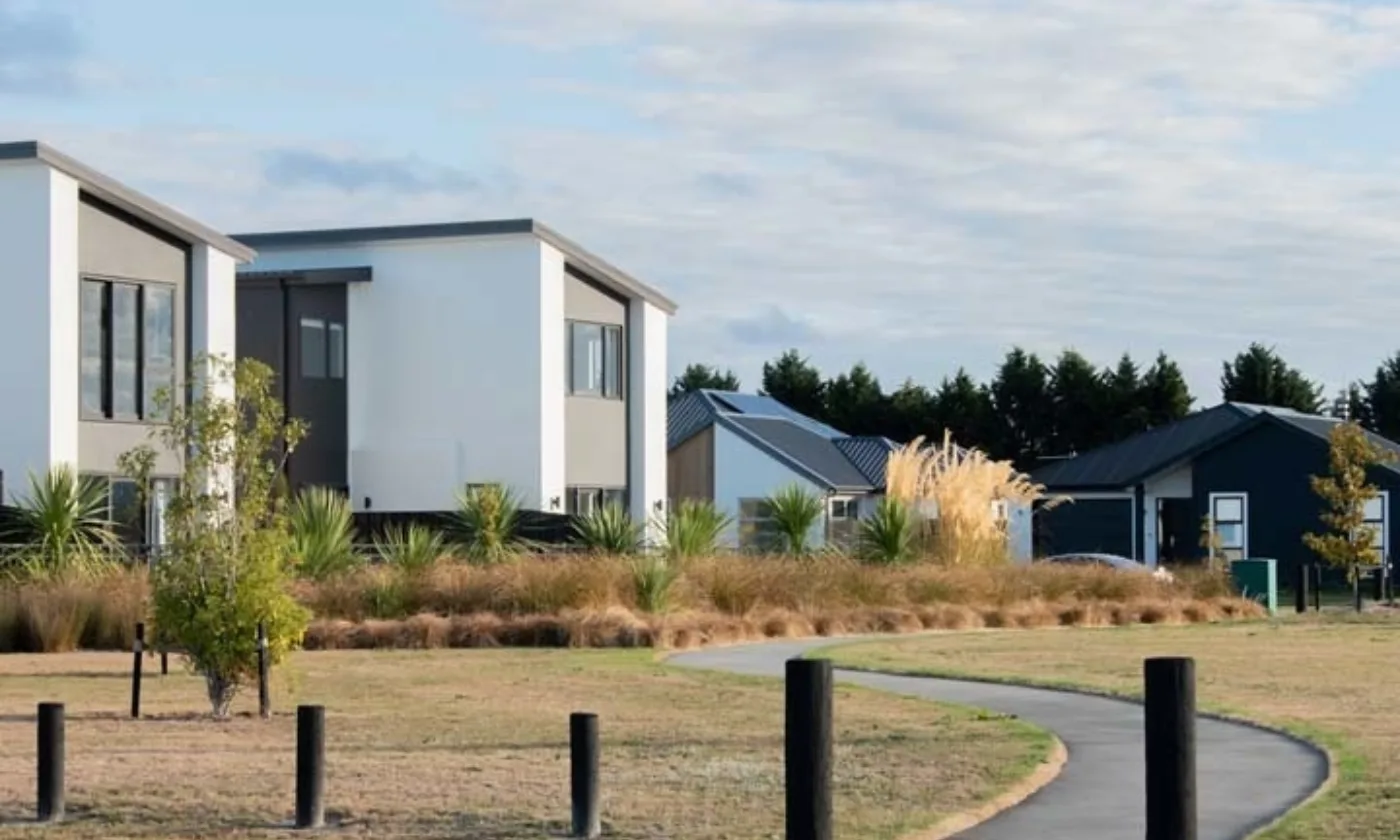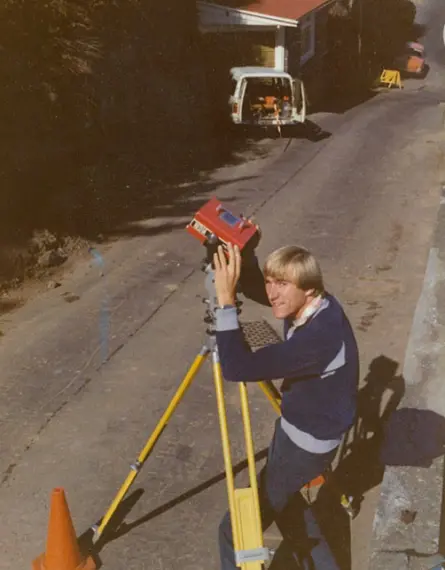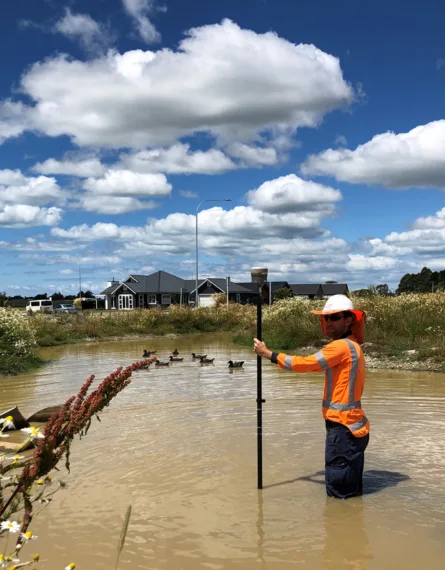
What to Consider when Developing a Site
- Geotechnical Engineering
- Structural Engineering
- Civil Engineering
- Land Surveying
- Hydrographic Surveying
- GIS
- Planning
- Environmental
- Water Engineering
- Contaminated Land Services
- Urban Design
- Landscape Architecture
Whether you’re subdividing a suburban property to increase density, transforming land or creating a commercial or industrial development, here's what you’ll need to consider to harness your site’s potential.
25 Jun 2021 | 4 min read
What to Consider:
Site and feasibility investigations
A smart first step is to have your site and project evaluated so you can understand the best spatial and build options available. Investing in this phase upfront is essential as it identifies any risk and opportunities while assessing whether your objectives can be achieved physically and financially.
- Accessing PIMs and LIMs: This is a standard procedure that will help you understand whether your planning and building project is possible and practical. Sourcing these documents will help our urban design team create effective site concept plans with an early insight into design parameters. A PIM (Project Information Memorandum) is specific to a proposed project. The LIM (Land Information Memorandum) provides information held by the council on the land itself and existing buildings or past activity, however, it does not have full details of the building restrictions that apply to the site. We would typically help with sourcing and explaining these documents prior to sale and purchase agreements being written up.
- Site investigations: These determine if the land is suitable for building on, where to best locate buildings and accessways, and the type and size of foundations needed. A site investigation will ensure unforeseen ground conditions don’t interrupt the construction process and that any development and construction on the land will be as sturdy and safe as possible. Our geotechnical engineers evaluate things like ground water conditions, the composition and strength of soil and rock beneath the surface, as well as any other factors that could affect construction or building safety. From this we make recommendations on how to remediate any concerns. This is where a structural engineer could become involved to advise on specific design techniques or construction materials.
- Development feasibility: From the above due diligence, we would prepare a report that attempts to uncover any likely issues or restrictions with regards to zoning, utility service availability, and consent requirements., This process can include the preparation of a development cost estimate.

Design phase
Interestingly, the subdivision process and the design and development processes are often separated. While there are rules for subdividing land, in many cases it is more important to know what the desired end outcome is first and think about the subdivision last. This will allow the design of the buildings and associated outdoor spaces to inform the subdivision design. Engaging with a consultant like Eliot Sinclair who can provide expertise across both these processes, from built form and land use modelling through to the subdivision design, allows for a holistic approach where the end vision is be understood from the start. This provides an insight into financial feasibility, delivering a cost effective and better overall outcome.
The design phase progresses through four stages: concept, preliminary, developed, and detailed design.
- Concept design: this is when your development first starts to come to life. Some people often embark on this part of the journey before doing a thorough investigation which can see them compromise on their vision if issues arise from it. Concept designs draw on information from the site and feasibility investigations and PIM and LIM reports. They consider how the site will be divided up into lots, building locations and orientation, access, any existing vegetation and structures, as well as site constraints and district plan requirements.
- Preliminary design: the concept is further refined and solidified, and an initial cost estimate can usually be produced to inform the developed design.
Developed design: the last opportunity to refine the overall nature of the site and development before planning commences. Developed designs have a much greater level of detail and require input from other specialists such as engineers and landscape architects. This design is submitted for consent. - Detailed design: based on the approved developed design (which may have had some iterations depending on how well the consent process went), the detailed design provides in depth drawings, details, and specifications. These drawings form the basis for any building consent applications and construction tender documentation.

Consents and permits
Resource consent is needed for any subdivision of land or when a building or planned activity on the site does not meet the rules of your local council’s local and regional plans. Other permits may also be required, e.g. for discharge of contaminants. There are different types of resource consent; the most common are for subdivisions, land use, and discharge. Land use consent is commonly known as ‘resource consent’.
The more you know and can prepare for upfront, the less risk of delays and money wasted. This is true for the consenting process if alterations need to be made to the designs, and during the subsequent construction phase. While councils usually have a set timeframe to process your application, this can be interrupted by RFIs - requests for information – or even the need to get other consents, for example from your regional council, or even neighbouring properties. This is where taking an integrated approach with a consultancy such as Eliot Sinclair who considers everything upfront can save time and achieve efficiencies.
Contract administration and observation
The role of contract administration covers pre-contract arrangements as well as regular meetings and site visits. These ensure construction is taking place in line with the contract and helps ensure quality, timeline, and cost requirements are being met. This includes liaising with and coordinating other consultants and contractors, issuing and verifying variations, maintaining records, payments, and notifying any faults. The final project documentation including the Code of Compliance Certificate from the Council is also managed at this stage.
Procurement
Any build requires the input of multiple different subcontractors. Knowing which ones to approach for tender, evaluating tenders, and choosing the right ones takes certain expertise including understanding cost versus value and assessing competence. Self-managing this process can be exceptionally complex and many people hand it over to their main contractor partner or hire specialists.
Our complete, streamlined package
Whether it’s a spec build or tailored design, with over 80 years’ experience, we’re experts at creating commercially viable and functional building developments. We help you maximise your site’s potential by drawing on the complementary capabilities and significant expertise of our multidisciplined team. We work closely with you to create a smarter project outcome, one that is economical to construct and adaptable to future tenant requirements.
We can manage and guide you through a seamless process across all stages of your project, from initial site investigation and design, through to the management of the consenting, procurement, construction and handover phases of the project. Get in touch any time to talk about your project needs.
Our site development services
- Structural engineering
- Architectural detailing
- Civil engineering
- Geotechnical engineering
- Surveying
- Town planning and resource consent applications
- Contamination assessment
- Landscape architecture
- Building consent applications and management
- Tender administration and contractor procurement
- Construction contract administration – engineer to NZS3910 contract
- Construction monitoring





